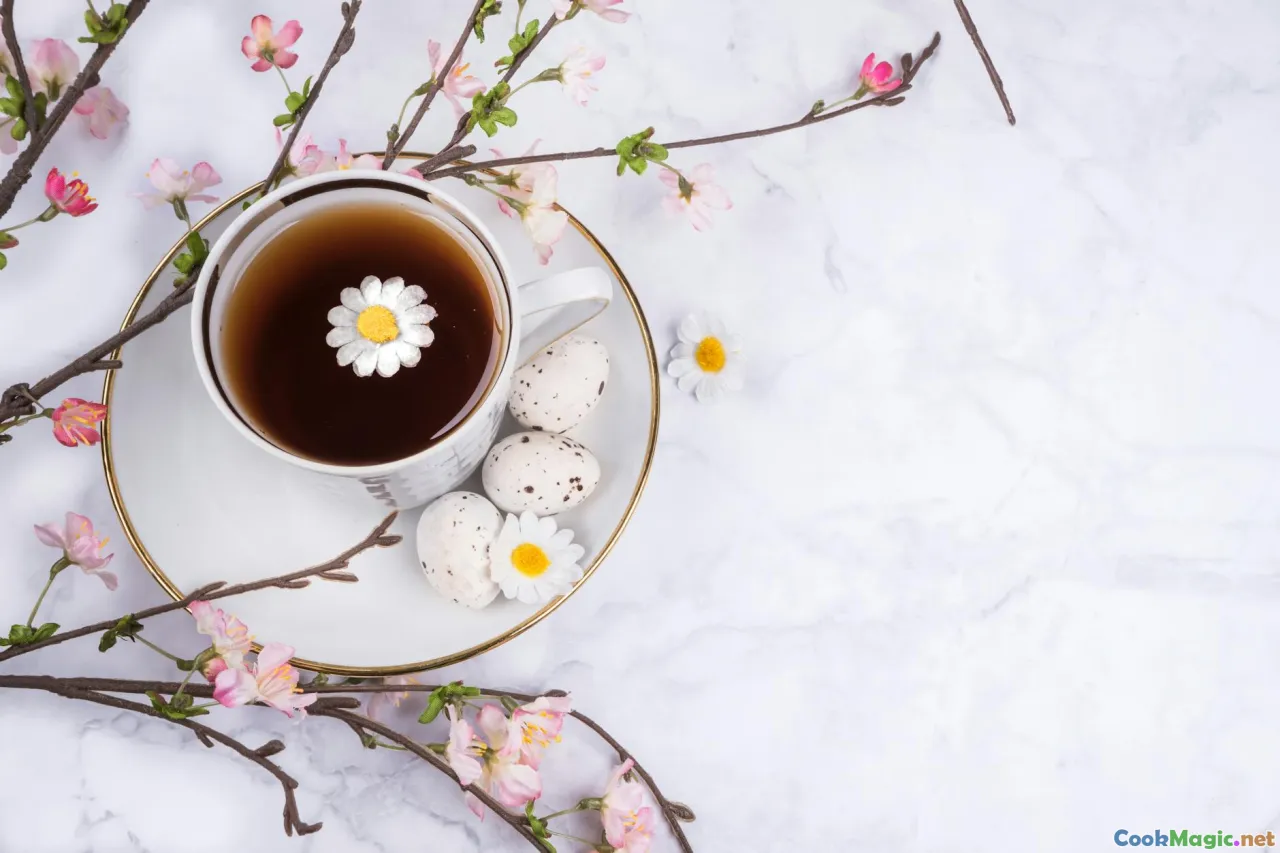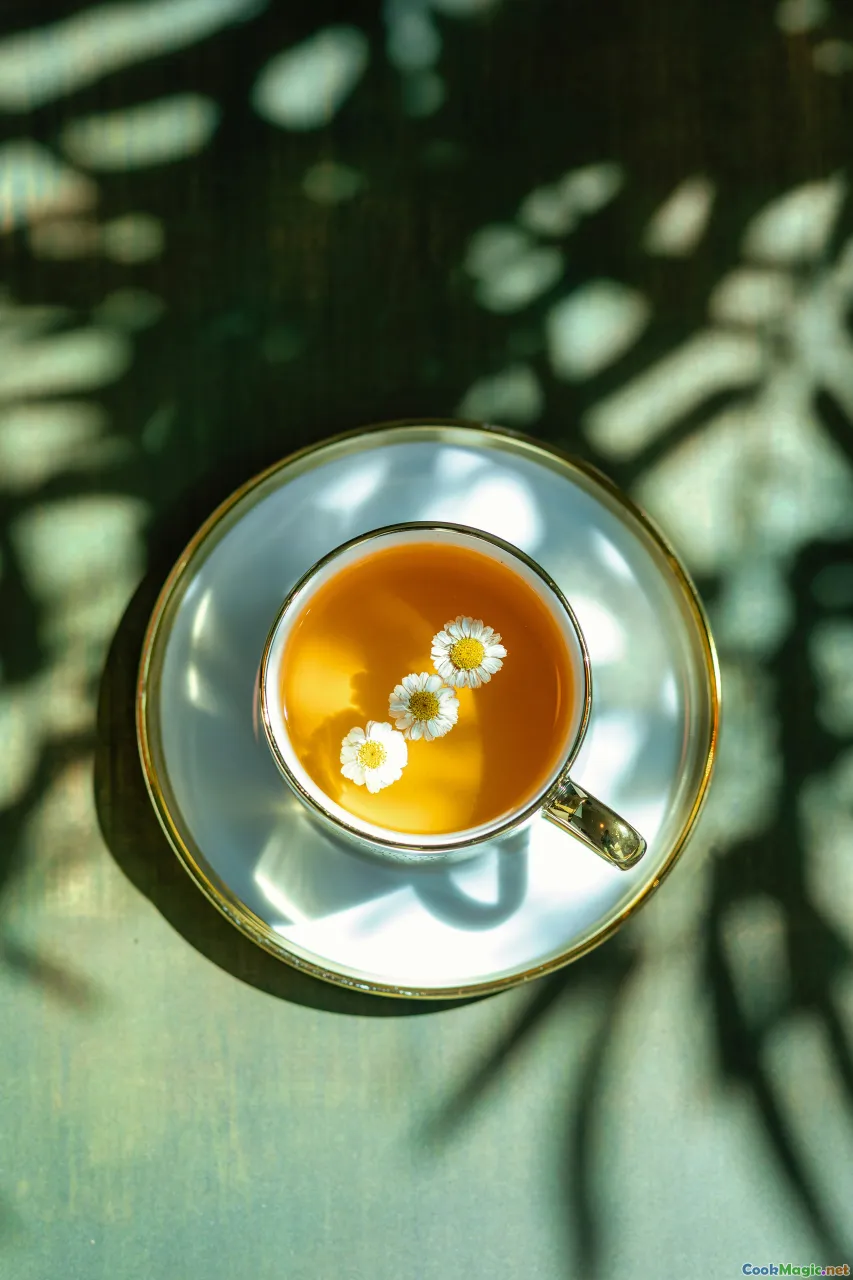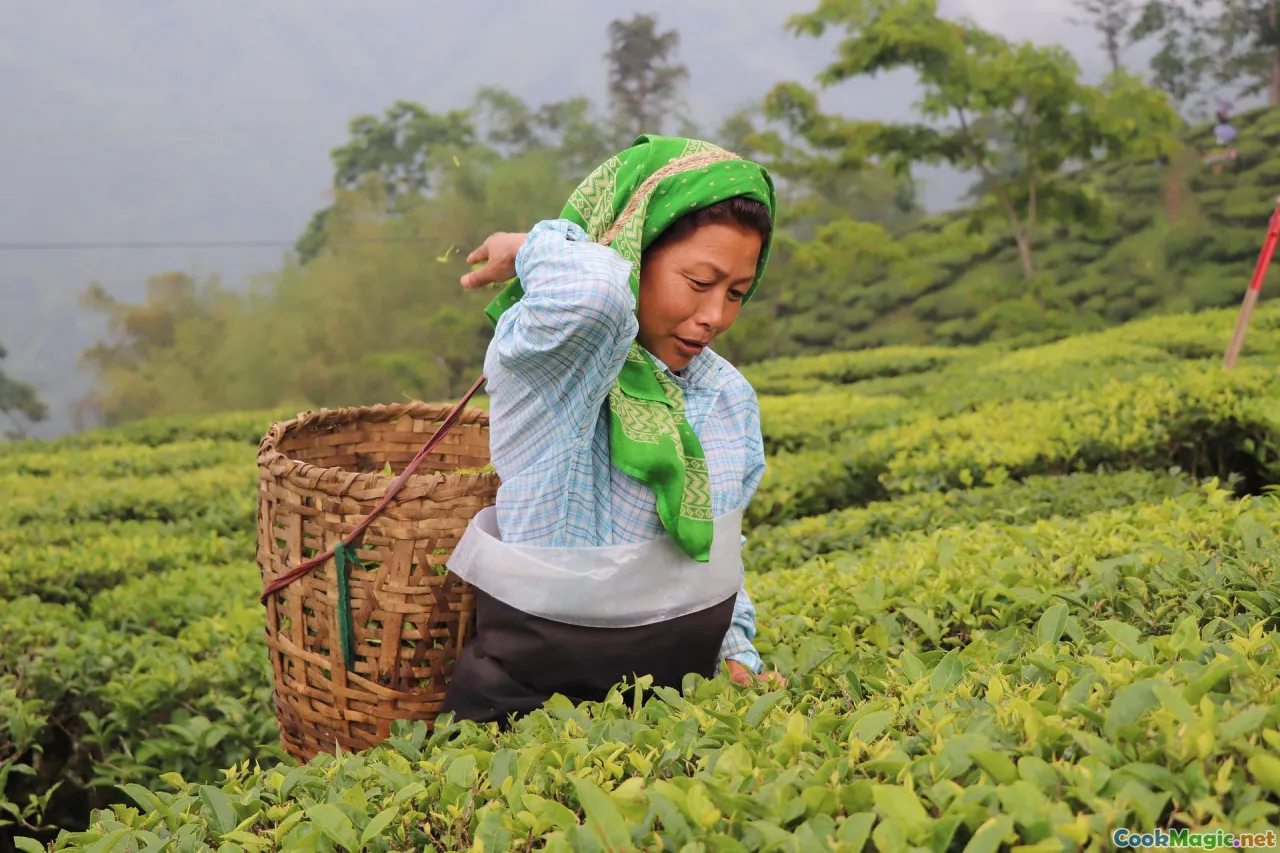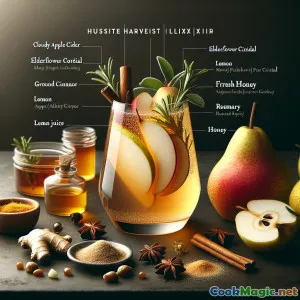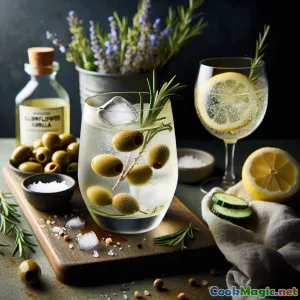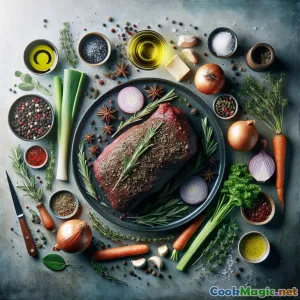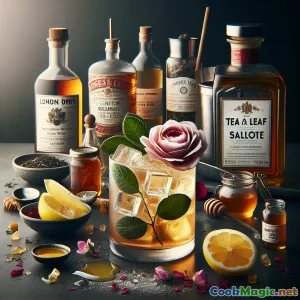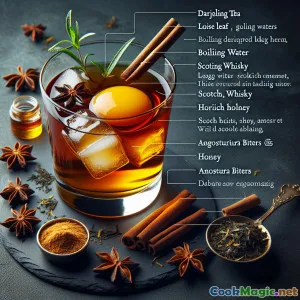
金色大吉岭威士忌鸡尾酒,搭配蛋的点缀
(Golden Darjeeling Whisky Cocktail with an Egg Twist)
(0 评论)食材
营养
- 份量: 1
- 每份大小: 1 杯(约 200 ml)
- Calories: 195 kcal
- Carbohydrates: 0 g
- Protein: 3.5 g
- Fat: 5.2 g
- Fiber: 0 g
- Sugar: 8 g
- Sodium: 15 mg
- Cholesterol: 210 mg
- Calcium: 27 mg
- Iron: 0.5 mg
制作步骤
-
1 - Infuse Darjeeling Tea:
Place Darjeeling tea leaves in a teapot and add boiled water. Steep for 3 minutes. Strain and set aside hot.
-
2 - Prepare Glass:
While tea steeps, set out a low, wide whisky glass. Warm it slightly with hot water, then discard the water.
-
3 - Assemble Cocktail Base:
Pour whisky into the warm glass. Stir in honey and bitters (if using) until well-blended.
-
4 - Add Tea:
Gently pour the freshly brewed Darjeeling tea into the glass with whisky mixture, stirring lightly.
-
5 - Float the Egg Yolk:
Carefully slip the raw egg yolk into the center of the glass, keeping the yolk intact. Avoid stirring further.
-
6 - Garnish and Serve:
Garnish with a star anise pod floated on the surface. Serve immediately while aromatic vapors rise.
Place Darjeeling tea leaves in a teapot and add boiled water. Steep for 3 minutes. Strain and set aside hot.
While tea steeps, set out a low, wide whisky glass. Warm it slightly with hot water, then discard the water.
Pour whisky into the warm glass. Stir in honey and bitters (if using) until well-blended.
Gently pour the freshly brewed Darjeeling tea into the glass with whisky mixture, stirring lightly.
Carefully slip the raw egg yolk into the center of the glass, keeping the yolk intact. Avoid stirring further.
Garnish with a star anise pod floated on the surface. Serve immediately while aromatic vapors rise.
关于 金色大吉岭威士忌鸡尾酒,搭配蛋的点缀 :的更多信息
The Story and Artistry Behind 'Amber Moon Over Darjeeling'
"Amber Moon Over Darjeeling" is not just a cocktail—it’s an experience that fuses the elegance of the English countryside with the mystical charm of the Himalayas. Inspired by the classic "Amber Moon"—a 19th-century hangover cure that dropped a raw egg into whisky—this innovative reinterpretation introduces curly notes of Darjeeling, the queen of black teas, to create a drink as warming and golden as a sunrise over rolling tea gardens.
Culinary Inspiration and Uncommon Pairings
While most English cocktails feature straightforward combinations, "Amber Moon Over Darjeeling" offers an unorthodox yet harmonious alliance: the smoky-malt aroma of whisky meeting the honey-sweet, muscatel scent of fresh Darjeeling. The raw egg yolk, gently poised atop it all, provides a silkiness on the tongue reminiscent of luxe flips and fizzes, but without their laborious foaming or shaking. Here, elegance comes from simplicity, balance, and the textile interplay of temperature and texture.
The float of star anise, though optional, introduces a perfumed suggestion of spice—a minute, enchanting whiff that bridges East and West without overwhelming the core notes.
Historical & Cultural Components
Egg-based tipples and the use of raw yolk date back centuries across Europe, most notably found in late-night 'hair of the dog' drinks and restorative pick-me-ups, such as flips, nogs, and of course, the Amber Moon. What distinguishes "Amber Moon Over Darjeeling" are its fusion instincts, speaking not only to colonial habits of tea-drinking in Great Britain but additionally marrying raised British pub culture—where whisky reigns after sunset—with genteel garden parties featuring afternoon tea.
Darjeeling itself carries deep cultural roots, representing both tradition and innovation. It’s harvested on mountain slopes and revered worldwide, not just as a beverage but as a symbol of craftsmanship and terroir. Here, it transforms the expected kick of whisky into something possessing both energy and sophistication: the briskness of new day plus mellow, philosophical haze.
Unique Aspects
With its contrasting textures—delicate tea, sharp whisky, supple yolk—it offers a new kind of mouthfeel. The tea modulates harsh alcoholic edges, making it accessible even to those who usually shy away from neat whisky. The honey and bitters serve to round and lift the flavors, amplifying what is already there rather than distracting.
This drink is made not for downing but for cradling, sipping, and contemplating. Served warm and aromatic, it appeals to those with a taste for gastronomic adventures, persons intrigued by tradition tempered by novelty, and anyone seeking a drink that bestows both invigorating and grounding qualities.
Chef's Tips, Serving Tricks, and Personal Notes
- Egg Security: To mitigate any safety risks with the raw yolk, ensure you use only pasteurized eggs—available at most good grocers.
- Whisky Choice: A smooth, not overly peaty Scotch brings elegance; too much smoke and the delicate tea is lost. If unavailable, an Irish whiskey may also suffice for a lighter touch.
- Tea Mastery: Don’t over-steep the tea—the key is fragrance, not bold tannins.
- Honey Matters: Floral honey (acacia or wildflower) layers best with Darjeeling’s aromas.
- Star Presentation: For true theatre, crack the yolk at tableside so the guest can marvel as it glows entire in the gold-flecked surface.
Serving and Occasions
I recommend savoring "Amber Moon Over Darjeeling" in the late evening, or as an adventurous companion to brunch on a lazy day when the world slows down. It is as delightful beside a window with rain streaking the glass as it is in a garden on a summer dawn.
In sum, "Amber Moon Over Darjeeling" is a drink that hums quietly of mystery and comfort, deftly bridging Victorian bravado with cosmopolitan finesse—proof that even the simplest rituals can leap beautifully across continents and centuries.

